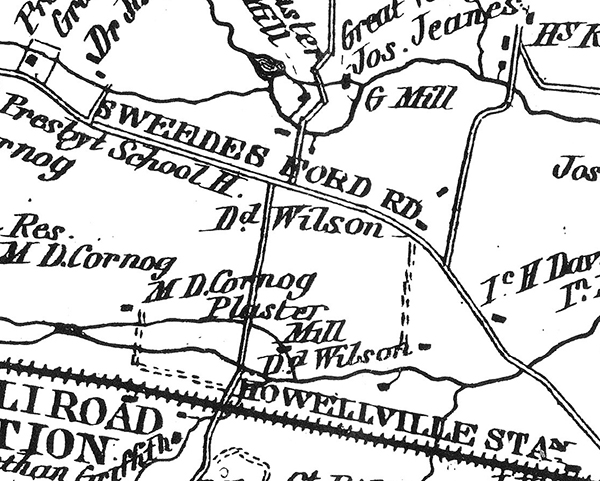A detailed timeline for the Mill(s)
- 1791 Thomas Walker, 200 acres, no mention of mill (tax)
- 1795 Thomas G. Walker, no mention of mill (tax)
- 1796 Thomas G. Walker (tenants John Yocum, B. Smith) Tilting hammer: $200
- 1797 County Tax - Blacksmith & tilt hammer – John Yocum
- 1798 Glass tax – Thomas G. Walker - Stone Tilt Forge 24’ x 18’, 2 windows 3 panes each
- 1799 County Tax Tilt Mill – Thomas G. Walker (occupier: John Yocam)
- 1800 County Tax Tilt Mill – Thomas G. Walker (occupier: Nathan Scott)
- 1801 County Tax Tilt Mill – Thomas G. Walker (occupier: Nathan Scott)
- 1802 Thomas Jerman Walker to John Llewellyn – tilt mill mentioned in deed W2-145
’also the said John Llewellyn shall have the full and entire liberty and privilege of ingress, egress and regress to pass to and through said Walker’s other land to a certain ditch or race of water which turns said Walker’s Tilt Mill for the purpose of leading water from and along said ditch or race to a bank or meadow purchased by said Llewellyn from said Walker, two nights in every week from sunset to sunrise …’
- 1847 Atlas – no mill shown
- 1860 Kennedy’s atlas – no mill shown; owner E. G. Griffith
- 1873 Plaster mill (Witmer’s Atlas)
- 1880 John M. Wilson to Charles Lyman, (deed G9-175), mentions dam and waterway
- 1883 Charles Lyman; no mill (Breou’s Atlas)
|

